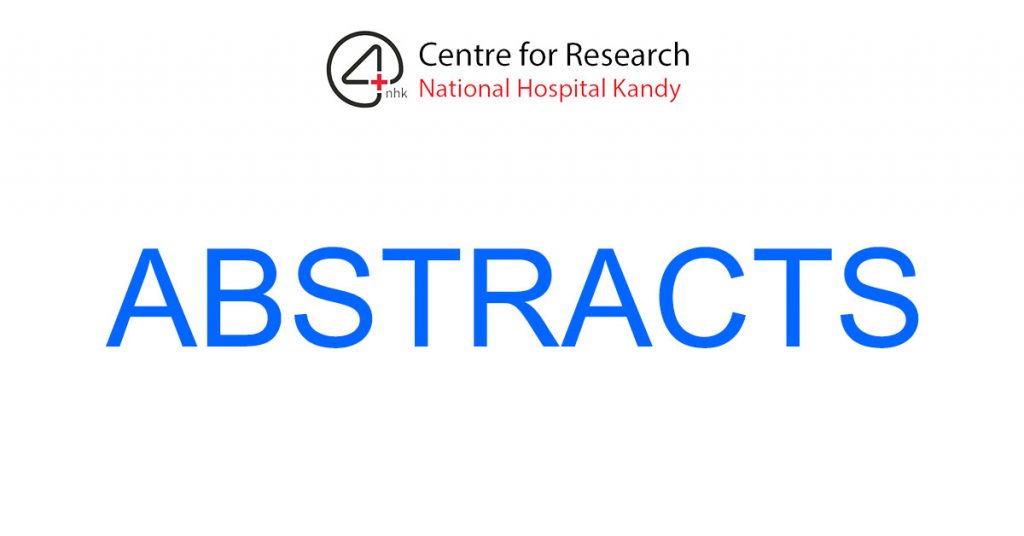B. FERNANDO , N. Hewa Gajamanage , N. Nanayakkara
Introduction
The Chronic Kidney Disease of uncertain aetiology (CKDu), a recently described tubular interstitial nephropathy, is prevalent in tropical or subtropical countries including pockets in the farming dry zone of Sri Lanka, India, Nicaragua, Costa Rica, Egypt, and Tunisia. There is growing evidence to suggest that hot weather and recurrent dehydration is at least, indirectly contributing to the onset and progression of CKDu. Hence, the Renin-Angiotensin-Aldosterone system (RAAS) is protective against AKI in CKDu. RAAS inhibitors retard the progression of Chronic Kidney Disease (CKD) shown to be increased mortality and hospitalization in CKD of the elderly. In this background, our aim is to investigate the degree of activation of RAAS in the light of serum Aldosterone in CKDu Sri Lanka.
Methods
All definite CKDu cases (119: male 97, female 22) in two renal clinics in endemic areas were enrolled after informed written consent. A structured questionnaire was used to collect demographic and medical information. Collected Blood and urine samples were analyzed for routine biochemical parameters and proteinuria. All analyses were performed in IBM SPSS statistics version 23. Pearsons’ correlation was used to measure the correlation between the parameters.
Results
Most of the patients (72.3%) were between, 40 to 60 years. The majority of the patients were male (81.5%). In the sample, 54.6% of patients were in the early stage (stage 1, 2, 3a) while 45.4% were in the late stage (stage 3b, 4, 5). About 33.3% had blood pressure within normal range while 86.3% of them noted to have normal diastolic blood pressure. Moreover, the majority of the patients (73.9%) were reported with the absence of proteinuria. Among the study subjects, 39.5% were on Angiotensin-converting enzymes (ACE) inhibitors and 10.1% of them were on Angiotensin receptor blockers (ARBs). Only 4.2% had shown coronary artery disease. Among the clinical characteristics, the average values of serum creatinine, serum osmolality were increased than the reference range. Only 4.4% and 6.7% of study subjects had increased serum levels of Aldosterone and Angiotensin II. About 49.1% of subjects had elevated serum osmolality but urinary osmolality was increased only in 1.7%. According to the Pearson correlation of biochemical investigations with serum Aldosterone, serum Aldosterone was significantly positively correlated with serum creatinine (r=0.477, p<0.01), Angiotensin II (r=0.379, p<0.01), potassium(r=0.230, p=0.014), and urea (r=-0.287, p=0.002) while it was significantly negatively correlated with eGFR (r=-0.353, p<0.01), calcium (r=-0.342, p<0.01), bicarbonate (r=-0.252, p=0.007) and Hemoglobin (r=-0.287, p=0.002). According to the independent-sample median test, serum Aldosterone was significantly different with the stages of CKDu (p=0.044), early & late stages (p=0.024), and proteinuria (p=0032).
Conclusions
In the current study, in cross sectional model, there was no obvious activation of RAAS. However, with the progression of the disease, serum Aldosterone was increased. Our findings confirm that there are no obvious indications for RAAS inhibitors at least in early stages of CKDu.
No conflict of interest
![]()



